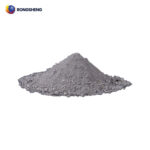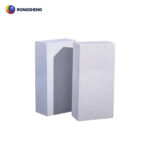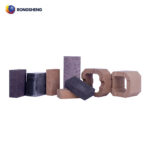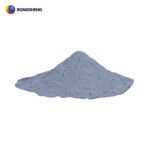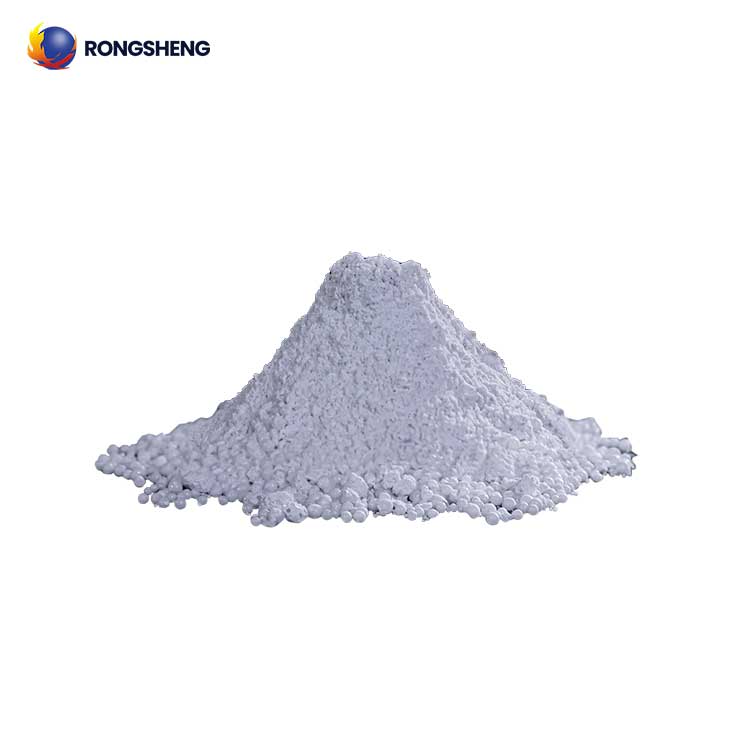
Lightweight Refractory Castables
- Low bulk density.
- Low thermal conductivity.
- Save energy consumption.
We are Here to Help!
Email: sales@hy-refractory.com
WhatsApp: +86 185 3831 2977
The Lightweight Insulating Refractory Castables, a castable mixture made of lightweight refractory aggregate, powder, binder and admixture is called lightweight refractory castables. Due to its low bulk density and low thermal conductivity, lightweight castables are also called insulating refractory castables.
Classification of Lightweight Refractory Castables
According to the bulk density, insulating refractory castables can be divided into:
- (1) Semi-lightweight refractory castables, with a bulk density of 1.0~1.8 g/cm3;
- (2) Lightweight refractory castables, with a bulk density of 0.4~1.0 g/cm3;
- (3) Ultra-lightweight refractory castables, with a bulk density of less than 0.4g/cm3.
According to the use temperature, lightweight (insulating) refractory castables can be divided into three categories:
- (1) Low-temperature insulating (lightweight) refractory castables, the use temperature is 600~900℃;
- (2) Medium-temperature insulating (lightweight) refractory castables, the use temperature is 900~1200℃;
- (3) High-temperature insulating (lightweight) refractory castables, the use temperature is >1200℃.
Low-Temperature Lightweight Castables Refractory
The raw materials used to prepare low-temperature lightweight refractory castables are mainly: expanded vermiculite, expanded perlite, diatomaceous earth and low-temperature ceramsite. The binders that can be used are ordinary Portland cement, aluminate cement, and water glass. When preparing expanded vermiculite castables, the expanded vermiculite particles are usually 1~8mm. The mass ratio of expanded vermiculite aggregate to cement (Portland cement or aluminate cement) can be adjusted according to the different requirements of bulk density and compressive strength. The general ratio is (35~45): (55~65). Its bulk density decreases with the increase of expanded vermiculite content, and at the same time, the strength and thermal conductivity also decrease. Expanded vermiculite can be used to prepare lightweight castables with a bulk density of 0.4~0.6g/cm3 and a thermal conductivity of 0.08~0.15 W/(m·K) after drying.
When preparing expanded perlite castables, the binder used is similar to that of expanded vermiculite castables, and phosphate can also be used as a binder. When ordinary calcium aluminate cement is used as a binder, the mass ratio of expanded perlite (particle size 1~8 mm) to cement is (35~50):(50~65). Within this ratio range, the physical properties of expanded perlite castables are: bulk density after burning at 900℃ is 0.3~0.7 g/cm3, compressive strength is 0.5~0.9 MPa, and linear change rate is -(0.6~1.2)%. Thermal conductivity at 700℃ is 0.06~0.18 W/(m·K).
Medium-Temperature Lightweight Refractory Castables
The raw materials used to prepare medium-temperature lightweight castables mainly include fly ash floating beads, clay porous clinker, lightweight clay bricks, shale ceramsite, clay ceramsite, and aluminum silicate fiber. The binder for preparing floating bead lightweight castables can be calcium aluminate cement or aluminum dihydrogen phosphate. When calcium aluminate cement is used as a binder, a small amount of silica powder (smoke, silicon) can be added. The ratio is roughly: 55% to 70% floating beads, 10% to 20% lightweight clay bricks, 15% to 25% calcium aluminate cement, 3% to 5% silica powder and a small amount of admixtures. The bulk density, compressive strength and thermal conductivity of floating bead lightweight castables also decrease with the increase of floating bead content in the castable.
Physical Properties of Floating Bead Lightweight Castables with Different Bulk Densities
| Items | B-1.0 | B-0.8 | B-0.6 |
| Bulk Density g/cm3 | 0.9-1.0 | 0.7-0.8 | 0.5-0.6 |
| Compressive Strength After Burning at 1000°C, MPa | 4 ~ 6 | 3 ~ 4 | 2 ~ 3 |
| Linear Change Rate after Burning at 1000°C, % | 0.5 ~ -1 | -0.5 ~ -1 | -1 ~ -1.2 |
| Thermal Conductivity, 350℃, W/(m·K) | 0.30 ~ 0.40 | 0.25 ~ 0.30 | 0.2 ~ 0.25 |
When preparing lightweight castables with clay porous clinker, the particle size composition of porous clinker is generally 10~5mm, 40%~50%; 5~2.5 mm, 25%~35%, 2.5~1.0 mm, 20%~30%. The matrix (powder) is composed of calcium aluminate cement and clay clinker powder. The amount of calcium aluminate cement added is adjusted according to the compressive strength requirements. The higher the compressive strength requirements, the greater the amount of cement added. The general ratio of aggregate to powder is (55~65):(35~45). Floating beads can also be used to replace part of the porous clinker in the aggregate to adjust the bulk density. An appropriate amount of silica powder can also be added to the powder to replace calcium aluminate cement to form a hydration and coagulation composite bonded castable.
Physical and Chemical Properties of Lightweight Castables Made from Lightweight Porous Clinker
| Items | D-0.8 | D-1.0 | D-1.3 | |
| w(Al2O3) % | ≥35 | ≥40 | ≥45 | |
| Bulk Density, 1000℃×3h, g/cm3 | 0.8±0.1 | 1.0±0.1 | 1.3±0.1 | |
| Linear Change Rate, 1000℃×3h, % | -1.1 ~ 0 | -1.0 ~ 0 | -0.6 ~ 0 | |
| Compressive Strength MPa | 110℃, 24h | ≥1.5 | ≥3.0 | ≥5.0 |
| 1000℃, 3h | ≥2 | ≥3.0 | ≥6.5 | |
| Thermal Conductivity W/(m·K) | 700℃ | ≤0.25 | ≤0.35 | ≤0.4 |
| 1000℃ | – | ≤0.40 | ≤0.45 | |
| Operating Temperature ℃ | 1150 | 1200 | 1250 | |
In addition to the widely used floating bead castables and porous clinker castables, medium-temperature lightweight castables also include ceramsite (shale ceramsite, clay ceramsite) castables and lightweight castables made of several medium-temperature lightweight aggregates. In addition, aluminum silicate short fibers plus clay clinker powder, calcium aluminate cement or aluminum dihydrogen phosphate plus hardening accelerators can also be used to make ultra-light medium-temperature castables.
High-Temperature Lightweight Castables
The raw materials for preparing high-temperature lightweight castables that can be used above 1200℃ include porous clinkers such as high-alumina, mullite, corundum, silica and magnesium. Or lightweight waste bricks, hollow balls of alumina, zirconia and mullite, chromium-containing or zirconium-containing aluminum silicate fibers, polycrystalline mullite fibers, etc. However, due to the limitations of raw material sources and prices, high-alumina and mullite porous clinkers are currently used more in industry. A small amount of special use requirements use hollow balls of alumina or zirconia, as well as high-alumina fibers and alumina fibers. The binders for preparing high-temperature lightweight castables include pure calcium aluminate cement, aluminum dihydrogen phosphate, aluminum sulfate and silica sol.
Mullite porous clinker with an Al2O3 content of 65%~72% and a bulk density of .1.00~ 1.25 g/cm3 is used as aggregate. The physical and chemical properties of mullite lightweight castables prepared with pure calcium aluminate cement as binder and a small amount of silica powder are shown in Table 17-21. This type of castable can be directly used as the lining of an atmosphere furnace used at 1350C.
Physical and Chemical Properties of Mullite Lightweight Refractory Castables
| Items | MK-60 | MK-65 | MK-70 |
| w(Al2O3) % | 59 ~ 61 | 64 ~ 65 | 68 ~ 70 |
| Bulk Density g/cm3 | 1.25 ~ 1.40 | 1.45 ~ 1.50 | 1.50 ~ 1.60 |
| Flexural Strength After Burning at 1350°C, MPa | 1.5 ~ 2.5 | 2.5 ~ 3.5 | 3.0 ~ 4.5 |
| Linear Change Rate after Burning at 1350°C, % | -(0.2 ~ 0.3) | 0 ~ -0.2 | ±0.2 |
| Thermal Conductivity, 800℃, W/(m·K) | 0.40 ~ 0.45 | 0.45 ~ 0.50 | 0.50 ~ 0.55 |
| Operating Temperature ℃ | 1250 | 1350 | 1450 |
Alumina hollow balls with Al2O3 content greater than 98% and natural bulk density of 500~800 g/L are used as aggregate. The physical and chemical properties of alumina hollow ball castables prepared with α-Al2O3 as powder, pure calcium aluminate cement and reactive alumina as binders are as follows: Al2O3 content greater than 96%; 110C, volume density after drying for 24 hours is 1.3~1.6 g/cm3. Compressive strength is 3~8 MPa. The volume density after firing at 1550℃ is 1.35~1.65 g/cm3. Compressive strength is 4~12 MPa, true porosity is 55%~65%; thermal conductivity (hot surface temperature 1100℃) is 0.9~1.1 W/(m·K). Alumina hollow ball castables can be directly used as working linings for atmosphere furnaces with high temperatures greater than 1500℃.
Application of Lightweight Refractory Castables
Lightweight refractory castables have a wide range of applications, including the linings of kilns, thermal equipment, flues and smokestacks in metallurgy, machinery, petrochemicals, electricity and building materials. Lightweight refractory castables are generally used as thermal insulation (insulation) layers. However, with the improvement of lightweight refractory castable materials and the advancement of preparation technology, there are also many occasions where they are directly used as working linings for atmosphere furnaces. Generally, low-temperature and medium-temperature lightweight castables are mainly used as thermal insulation linings and do not directly contact the flame. However, a large part of high-temperature lightweight castables are directly used as working linings that do not contact the melt or solid medium in the furnace. In particular, they can be used as working linings for various heating furnaces and heat treatment furnaces. It can greatly save energy consumption.
Rongsheng Lightweight Refractory Castable Manufacturer
Rongsheng Refractory Material Manufacturer is a powerful manufacturer and seller of refractory materials. Rongsheng’s refractory products have been sold to more than 120 countries around the world. For example, etc. Rongsheng’s environmentally friendly fully automatic unshaped refractory production line provides reliable guarantee for unshaped refractory lining materials for high-temperature industrial furnaces. Rongsheng’s technical team can customize unshaped refractory materials for customers according to the actual working conditions of high-temperature furnaces. Customized refractory lining material solutions. Contact Rongsheng for free samples and quotes.


